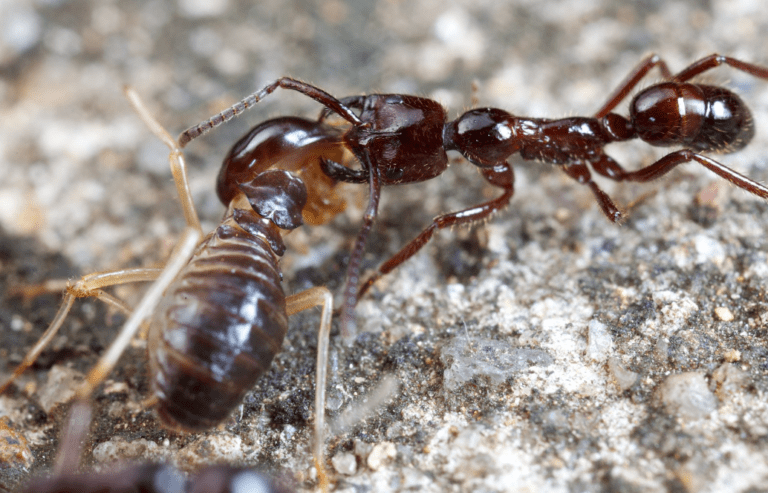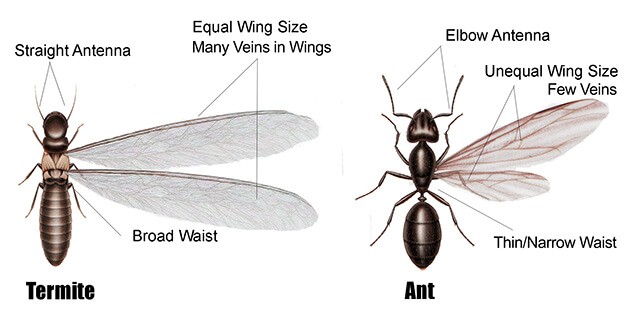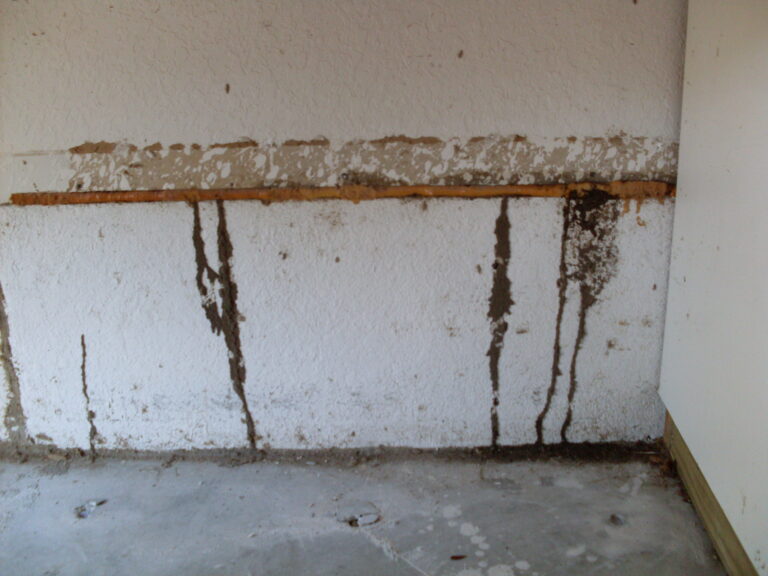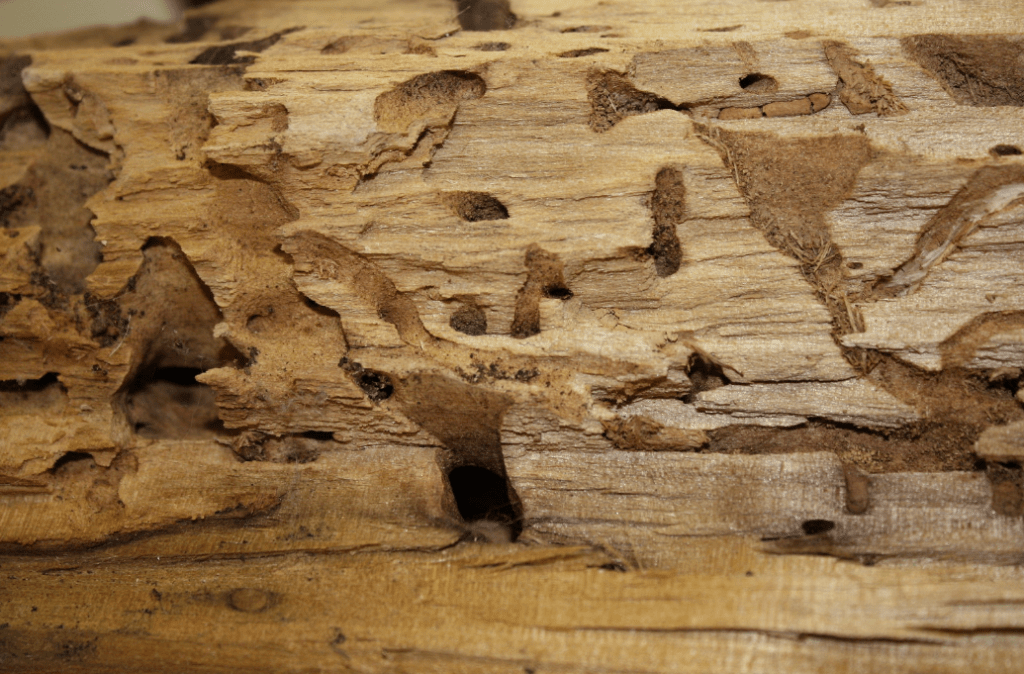Knowing how to differentiate between a carpenter ant and a termite will help you distinguish the damages they can both cause and could even help you prevent them from damaging a home.

PHYSICAL DIFFERENCES BETWEEN CARPENTER ANTS & TERMITES
A lot of people mistake termites for ants and vice-versa because they look very similar. But when you take a closer look, you’ll notice they do not possess the same physical features. To start, ants have a narrow waist with 3 distinct body regions contrary to termites which have a straight waist with 2 body regions. Then if you look at their antennae, you’ll see that termites have straight or slightly curved antennae while ants have elbowed or bent antennae. Their wings are also different: ants possess two pairs of wings of unequal size while termites’ wings are the same size, however, both insects are black in the alate form.

DIFFERENCES IN DAMAGES BETWEEN CARPENTER ANTS & TERMITES
In addition to their distinct physical features, the damages caused by ants and termites are also different. On one hand, some termite species are attracted to moisture and humidity and need constant contact with soil to be able to reach water. So, when traveling above ground, termites leave mud tubes (sometimes known as galleries or tunnels) that can be found inside or outside of someone’s house.

On the other hand, carpenter ants do not eat wood, but rather dig tunnels with their large mandibles in order to move from one part of the nest to another. Additionally, since carpenter ants do not use mud or soil (like their termite counterparts do) their galleries are extremely clean and smooth.
